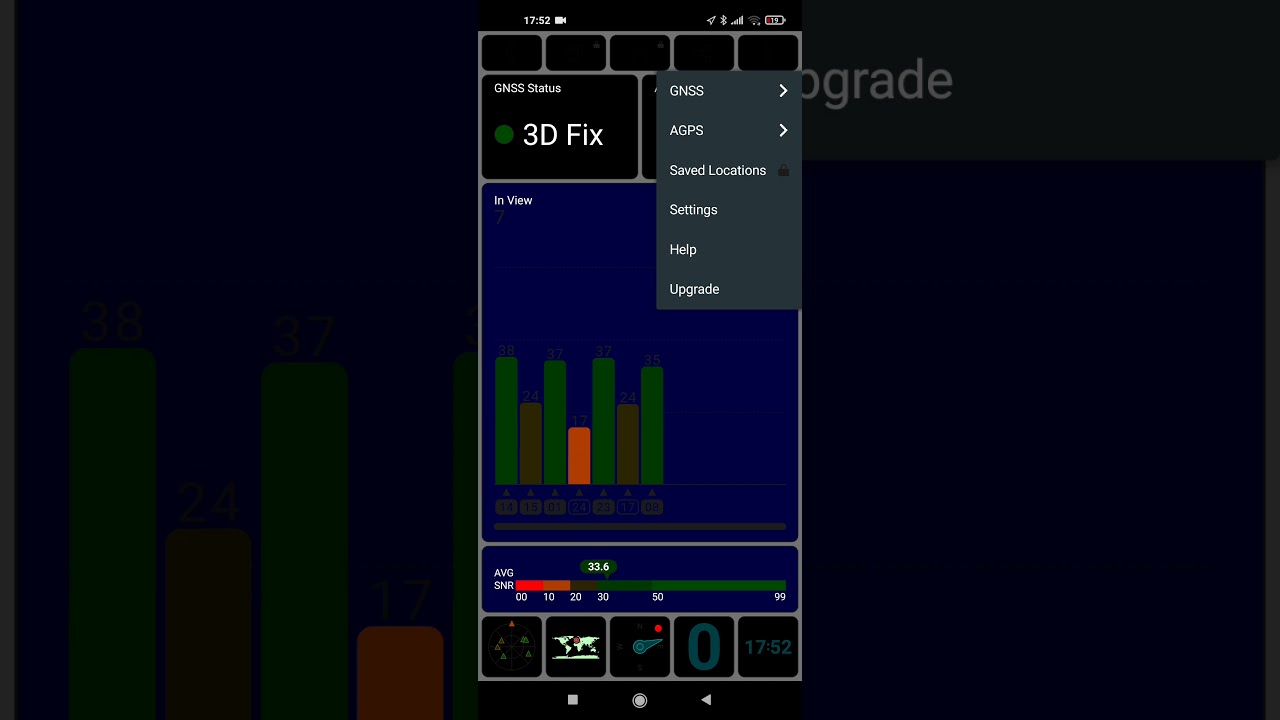Test Reviews
Xiaomi Mi 11 Lite test / review
Published on: 01-02-2021 / Modified: 11-12-2022
I have been testing smartphones for 2 years and one of the first phones I tested was the Xiaomi Mi 8 Lite. This phone had given me a very good impression, so I systematically bought every model in this range, buying the Mi 9 Lite and more recently the Mi 10 Lite. This Mi 11 Lite is therefore the fourth generation that I am buying.
The positioning of this product range has evolved over 4 generations. The Mi 8 Lite was close to the Redmi Note 5 with a few things to set them apart. Over time this product range has approached the premium range at Xiaomi and where a Mi 8 Lite was marketed at around € 200, the new models are positioned above € 300. Was this price increase justified? Yes because even with this higher price, these models remain very competitive and generally offer more than what the competition is able to offer in the same price range.
What does this new Xiaomi Mi 11 Lite have in store for us? The Mi 11 Lit takes over the CPU and GPU of the Redmi Note 10 Pro with a smaller screen, a smaller weight and a smaller footprint and I see a new photo sensor appear with the Samsung GW3. The photo and the video will be strong elements of this new phone.
The release date has been postponed several times but things are clearing up now, the Xiaomi Mi 11 Lite is available for presale at Banggood and Aliexpress
On Banggood, I found it for 254 € !! Launch offer on Banggood
On Aliexpress, it seems to be positioned at € 299. offer on Aliexpress
Manufacturer web site:
https://www.mi.com
Site where I have bought the Xiaomi Mi 11 Lite: https://s.click.aliexpress.com/e/_AstBSx
Structure of my tests
I test the phones according to a pre-established structure (see below) to provide you with as much information as possible. Unfortunately, this takes a long time. Some tests like network performance tests take several days and for photo tests I sometimes have to wait until the weather is suitable to take pictures in good conditions. I am therefore obliged to publish the tests step by step, so I invite you to come back if the test is not complete at the time of your visit.Price Xiaomi Mi 11 Lite
The list below shows the prices for the Xiaomi Mi 11 Lite from more than 50 sites around the world. If you are not satisfied with any price, you can subscribe to a price alert to be the first to be notified when the price drops.The above links are affiliate links from companies such as Amazon, Gearbest, Aliexpress,... If you appreciate my work, I would be grateful if you could purchase these products through these links. It costs you absolutely nothing but I get a small commission that allows me to buy the material I test. Thank you very much!
Timeline
April 14, 2021: Xiaomi Mi 11 Lite pre-sale purchase on AliexpressApril 19, 2021: I received the phone, the test can start.
Why this phone?
The Mi XX Lite range is usually at the limit of the budget I can afford to buy a phone but so far I have never been disappointed. These are phones that I have never had any trouble selling after my tests, they are so in demand that when I post an ad, the phone is sold before the end of the day.The Mi 11 Lite will probably follow the same path. This type of phone occupies a position in the middle of the range by offering good finishes, good performance and sometimes a few good photo surprises. The Xiaomi Mi 11 Lite will also offer a periscopic zoom lens, this is the first time I will have the opportunity to test a phone of this type, I am curious to see what it will look like.
My purchase of the Xiaomi Mi 11 Lite will be a blind purchase as I will buy it as soon as it is available, it is one of the safe bet at Xiaomi. So I will probably be one of the first to test it, it will also depend a bit on the delivery time.
Unpacking
First configuration
Not yet available / testedFinish
Beyond its weight, I find the Mi 11 Lite to stand out quite strongly from the Redmi range with a glass back that reflects light almost like a mirror. The back is perfectly smooth over its entire surface except for the photo sensor which sticks out slightly but even here the camera only sticks out a few millimeters.
Overall the level of finish is really good for a phone of this price, it takes the basics of the premium model Mi 11 by using a different reflective surface on the back. This new Xiaomi Mi 11 Lite follows the philosophy of the Lite range quite well.
Specifications
The information below comes from the Device Info HW application. The application provides detailed technical information about the tested phone.The Xiaomi Mi 11 lite takes the technical bases of the Redmi Note 10 Pro (CPU / GPU) but it differs from other Xiaomi models on many other points. The screen is smaller (6.55 inches) and uses a frequency of 90hz (240hz for games). It is also in terms of its format and its weight that this Mi 11 Lite will stand out, with 157 grams it is one of the lightest Xiaomi that I have been able to test.
The Xiaomi Mi 11 Lite uses UFS 2.2 memory, this is a step back from the Poco x3 Pro which costs a little less. I guess they took over the memory of the Redmi Note 10 Pro instead.
There is a 4G and 5G version of this phone and in both cases the frequency coverage is very wide. I see that the GPS should also cover two frequencies for the GPS network (L1 + L5) and two frequencies for Galileo (E1 + E5a).
CPU / GPU Performance
The Xiaomi Mi 11 Lite is equipped with a Qualcomm Snapdragon 732G processor for the 4G version and a Qualcomm Snapdragon 780G for the 5G version. These two versions are not in the same category, the 732G is a mid-range processor also used in the Redmi Note 10 Pro where the 780G is a high-end processor that will be released the first time with the Mi 11 Lite. One can expect a performance on the level of a Poco F3 with the latter.
The Xiaomi Mi 11 Lite is equipped with a Qualcomm Adreno 618 graphics chipset (identical to the Redmi Note 10 Pro) in its 4G version and a Qualcomm Adreno 642 for its 5G version. Here too, the difference between the two is quite large, the 5G version should score around 600,000 points on Antutu while the 4G version should reach 300,000 points.
Benchmark Antutu/3DMark
I got a score of just over 290,000 points with Antutu and this score is almost identical to what I got for the Redmi Note 10 Pro. The Xiaomi Mi 11 Lite uses the same CPU and GPU as the Redmi, so it is not surprising to find very similar performance. This is a fairly typical score for the mid-range at Xiaomi, the Mi 11 Lite is a versatile phone that will allow you to play most games (sometimes with a compromise on the graphics level) and use any what application. If you want more performance for the same price, you have to go for the Poco range.Gaming
To test the performance in game, I download the mobile PUBG game and evaluate the in-game experience, graphics level and depth of vision. This game is quite demanding and should help you evaluating the performance of a phone.


Network performance
The Xiaomi Mi 11 lite in 4G version supports a wide range of frequencies which will allow you to use it anywhere in Europe. The 5G version also offers wide coverage of 14 frequencies which should cover all European countries as well.Signal 4G (before december 2020)
The ability to pick up the network correctly is an essential element for a phone but it is only very rarely measured. To measure a phone's ability to pick up the network, I perform a large number of measurements on the same cells to be able to compare phones under similar conditions. The signal is measured in dBm, a value of -90dBm indicates a worse signal than -70dBm. These measurements are therefore taken under real conditions and not in a laboratory, they are not scientific but give a good indication of performance.
Signal 4G (from December 2020)
I decided to change the methodology for measuring the network because I noticed that the configuration of the mobile network changes over time. This makes it more difficult to compare phones because the conditions are no longer exactly the same.
To overcome this problem, I set up a device that captures 24 hours a day about ten parameters from the mobile network (ex: cell id, rssi, rsrq, snr, frequency,...). I then place the phone next to the device for 24 to 48 hours taking the same measurements so that I can compare them.
Overview of the phones tested with this methodology
I performed 2875 measurements in 4G with the Xiaomi Mi 11 Lite, it is more than usual, I had simply forgotten the phone and left it longer than expected next to my test machine. The measurement is therefore still a little more reliable than usual and the result is really good. The Xiaomi Mi 11 Lite uses a Snapdragon X15 modem which is also used by the Redmi Note 10 Pro. How is that interesting? I had obtained a very good score with the Redmi Note 10 Pro and these results with the Mi 11 lite confirm that the Snapdragon X15 is a good modem.
Download/Upload speed
To test the download speed, I have identified some 4G cells offering good performance where I test all my devices several times to see what download and upload speed they can achieve.
Wifi performance
To test a phone's ability to receive the network properly, I take measurements near my router and then remotely (and always at the same place). This gives me an average in dBm where a value of -90 dBm indicates poorer performance than a value at -30 dBm.Wifi signal
The Xiaomi Mi 11 Lite uses the same wifi chipset as most Xiaomi phones in the same price range (Redmi or Poco) but yet I didn't get the same kind of result. The sensitivity to the wifi network seems less good with this Mi 11 Lite because I got a -24 dBm signal near the router where I get around -15 dBm with a Redmi or a Poco. It takes me longer to see if this is a whim of my router or if it is a poorer performance of the phone.
Download/Upload speed
To test the speed in Wifi, I connect to my router in 2.4Ghz and 5Ghz (if available) and use the Ookla application to measure the speed.
GPS performance
To test the quality of the GPS signal I use the Offline Maps application and I make the same train trip in pedestrian mode. Why? In pedestrian mode, the GPS does not artificially correct the signal to stick to the road, it has no markings, so you can see the actual position. I then use an application to measure the accuracy of the signal.

Battery range
Not yet available / testedPhoto camera test
To test the quality of photos produced by a phone, I do a technical test (resolution, sharpness, chromatic aberration,...) in studio (identical conditions) to evaluate the technical part objectively. From the second half of 2020, I built my own laboratory to take completely objective technical measurements. I then take pictures in real conditions to see how the camera performs. I then evaluate these photos according to my criteria but I publish the photos so that you can evaluate the result according to your criteria.Hardware
The Xiaomi Mi 11 Lite (4G and 5G) is equipped with a Samsung GW3 main sensor of 64 million pixels. I have not yet had the opportunity to test this sensor, it is not yet very widespread. It is also used by the Samsung Galaxy A32, Nubia Red Magic 6 and Black Shark 4 Pro. This sensor is optimized for low light photos and should offer effective stabilization in 4k.This phone is also equipped with an 8 million pixel ultra wide angle sensor, it is arguably the same as in other phones of this brand, I would see at the use if I can recognize his fingerprint.
Default app
The Mi 11 lite's default photo application is the same as that used on other Xiaomi phones running MIUI 12. If you are looking for an alternative application, know that GCAM works very well on the Mi 11 Lite.
Photo quality
Photo test / studio
As with most phones that go through the studio, the photos are mostly underexposed but I find the auto mode without HDR and AI does fine. With one or two more exposure notches, the photo would have been exposed correctly, that's what I did with pro mode. The colors are also too dark (and too cold) due to the underexposure but here with the right settings the problem can be fixed. The sharpness is quite good but the artificial depth of field is quite small on the other hand and it is clearly visible in a circular fashion. I also noticed a more pronounced vignetting than what I'm used to seeing. There is nothing dramatic at this point, everything can be fixed on the phone and phones that produce good photos without the pro mode under artificial light are quite rare. I expected better from this sensor but the tests that will follow will be much more decisive in my evaluation.
Photo test / sunny
Main sensor: Samsung GW3
For this first series of photos, the conditions were really ideal, the sun dominated a slightly hazy sky and the grazing light at the end of the afternoon brought a touch of warmth to the vegetation. From the first photo, I noticed that the colors were highly saturated. At first I thought I forgot to turn off HDR or AI but no, everything was turned off. This saturation varies according to the dominance of the colors. You will notice that in the photos where the blue is dominant (by the sky or the water), the saturation is clearly more visible. This treatment produces quite vivid photos that will surely appeal to a large audience, but this choice for saturation can sometimes give the photos an unnatural aspect. I see that sometimes the sky turns a little purple. If you are the type to look for flaws in the details of your photos, you will undoubtedly also find chromatic aberration as well as mixtures of colors which are sometimes a little curious.
The other element that I noticed from the first photo is the sharpness. Looking at the freshly taken photos, I had the distinct impression that the sharpness was quite high and this was confirmed by looking at the photos on a larger screen. Sharpness is essential to take good photos, so it's a good thing but sometimes too much sharpness leads to the opposite of the expected result and this is particularly the case for the X2 zoom where I find that the quality of the photo deteriorates quite strongly. The quality always degrades with digital zoom but I find it very noticeable on this phone.
I took many photos so that you can judge if this phone will produce photos that you will like because beyond the technical aspect, there is a purely subjective aspect to it. 'appreciation of the photos. This excess saturation is not technically correct, but that does not mean that the photos will not look good.
Ultra wide angle sensor: Sony IMX 355
Photo test / cloudy
Not yet available / tested
Test photo / night
Not yet available / tested
Video quality
Stabilisation

Video normale conditions


The Xiaomi Mi 11 Lite therefore produces beautiful videos with a quality quite comparable to the Redmi Note 10 Pro but with more sharpness and greater color saturation.
Video low light
Not yet available / tested
Audio quality
To test the quality of the phone's audio output, I connect the device's audio output to a measuring tool, then play sounds on all frequencies and measure the differences between the original sound and the sound produced by the phone. In this way I measure the phone's ability to correctly reproduce all sounds.Frequency Response
This test is intended to test the device's ability to correctly reproduce all frequencies. The white line in the middle of the graph is the ideal situation and the other colors come from tests on different phones. A deviation from the reference line indicates a deviation from the ideal situation. To see good sound at all frequencies, it is therefore necessary to get as close as possible to the reference line.
Dynamic Range
This test is designed to test a phone's ability to play sounds at different volume levels. Here too, the phones must be as close as possible to the reference.
Noise Level
This test aims to identify if the device under test is able to reproduce sounds without too much noise. A high score indicates a low parasite rate, a lower score indicates a higher presence of parasites.
Screen quality
To test the screen, I use a colorimetric probe that measures the color accuracy of a screen, as well as other parameters to see if a screen is able to correctly reproduce an image. I also test the brightness level to determine if the screen will be able to display an image in full sunlight.Colorimetry
Brightness / Contrast
I had been a little surprised by the brightness announced by Xiaomi for this Xiaomi Mi 11 Lite because the data sheet indicates that the screen is capable of producing 800 cd / m², it is absolutely huge, so I first thought it was a mistake but it is not. I pushed the brightness to the maximum and used the sun mode to get just a little less than 800 cd / m². It is one of the brightest screens I have had the opportunity to test and you will be able to use it in all conditions, even under intense sun.
The Mi 11 Lite's screen is an Amoled screen, which means blacks are truly black and the contrast is almost infinite. I am seeing more and more Amoled displays in this price range so it is no longer something exceptional but if you come from an LCD / IPS display you are going to see the difference.
Biometry
The Mi 11 Lite is equipped with a side fingerprint sensor like most Xiaomi phones that came out this year, it is also often the same sensor that is used. This sensor works really great to the point that I have a hard time switching back to another type of sensor. Samsung seems to want to continue to offer sensors on the screen, it is undoubtedly more aesthetic but much less effective.Operating system
Encoutered bugs
Not yet available / testedAccessories Xiaomi Mi 11 Lite
Compare Xiaomi Mi 11 Lite with the others
Test / Review conclusion
I still have to finalize some details for this test but that will not change the conclusion. The Mi 11 Lite returns to its origins with an ultra thin format, light weight and a glass finish. This format is also one of the strengths of this phone because the Chinese have started a race that results in the marketing of increasingly large and heavier phones, the Xiaomi Mi 11 Lite is sailing against the tide and it will undoubtedly be a very good thing for all those who were tired of walking around with a brick in their trouser pocket.
Obviously, the choice of a phone does not stop with its size or its weight, the Xiaomi Mi 11 Lite offers other advantages. It is in particular the first Xiaomi to use the Samsung GW3 photo sensor which offers good sharpness in photos and high saturation which will make your photos more vivid (but less natural). The Mi 11 Lite also offers effective stabilization in 4k, this is quite rare in this price range and videos follow the same path as photos, sharpness is good and colors are more vivid / saturated.
The Xiaomi Mi 11 Lite is equipped with an Amoled screen, this gives it good contrast but that's not all, the Mi 11 Lite offers very accurate colorimetry. It ranks in the top 3 at the time of this writing. To complete the picture, I would also add that the screen is very, very bright, with 800 cd / m², you can use it in direct sunlight without any problems.
On the performance side, the Mi 11 Lite ranks average, Xiaomi sells other more powerful models at a lower price. Performance is therefore not the hobbyhorse of this Mi 11 Lite but it is powerful enough to appeal to a general public. Gamers, on the other hand, should opt for a Poco X3 Pro.
We often forget it, but at the base, a telephone is used to ... telephone. The Mi 11 Lite offers excellent network sensitivity which will allow you to keep the signal longer and achieve good download speed. Xiaomi has come a long way at this level over the past 12 months and traditional brands cannot always do better.
Does the phone have any faults? I wouldn't go that far, I would rather talk about weaknesses. I noticed a fairly significant difference in sensitivity in wifi between the 2.4Ghz frequency and the 5Ghz frequency, the signal sensitivity was better in 5Ghz, but this does not make sense. The download speed was also slower than other phones in the same price range.
Strengths
- finish, size / weight
- screen quality
- network sensitivity
- photo sharpness
- 4k video stabilization
Weaknesses
- wifi sensitivity
- wifi download speed
- photos sometimes too saturated
Alternatives to this product
Not yet available / tested







































Questions/Comments